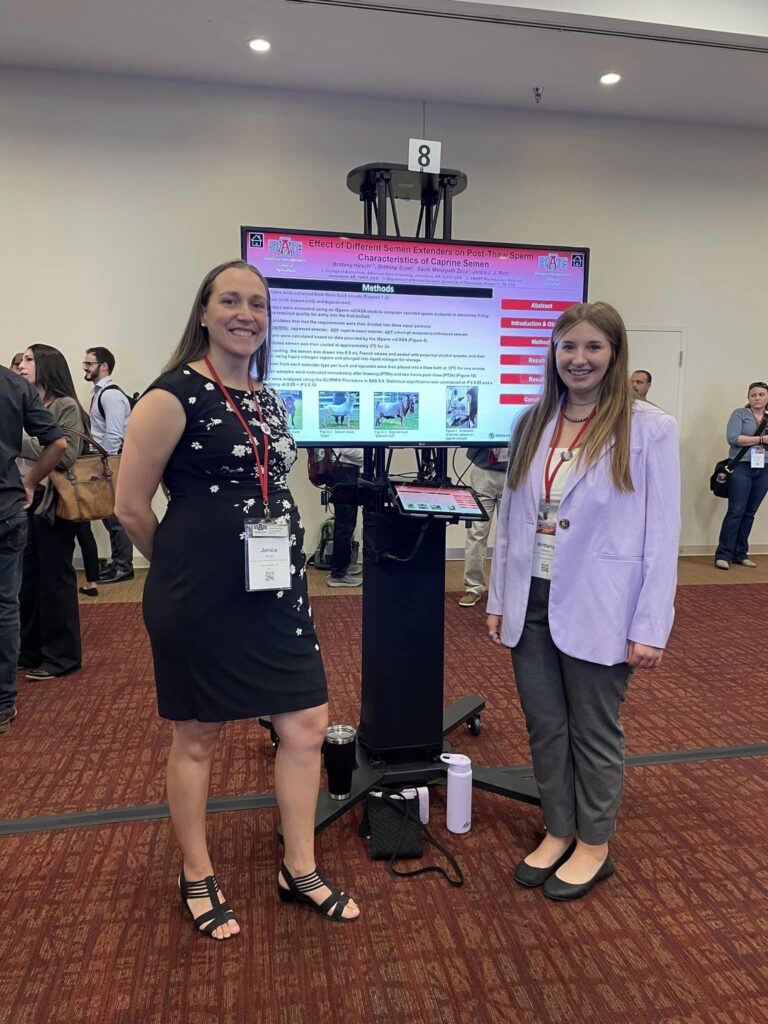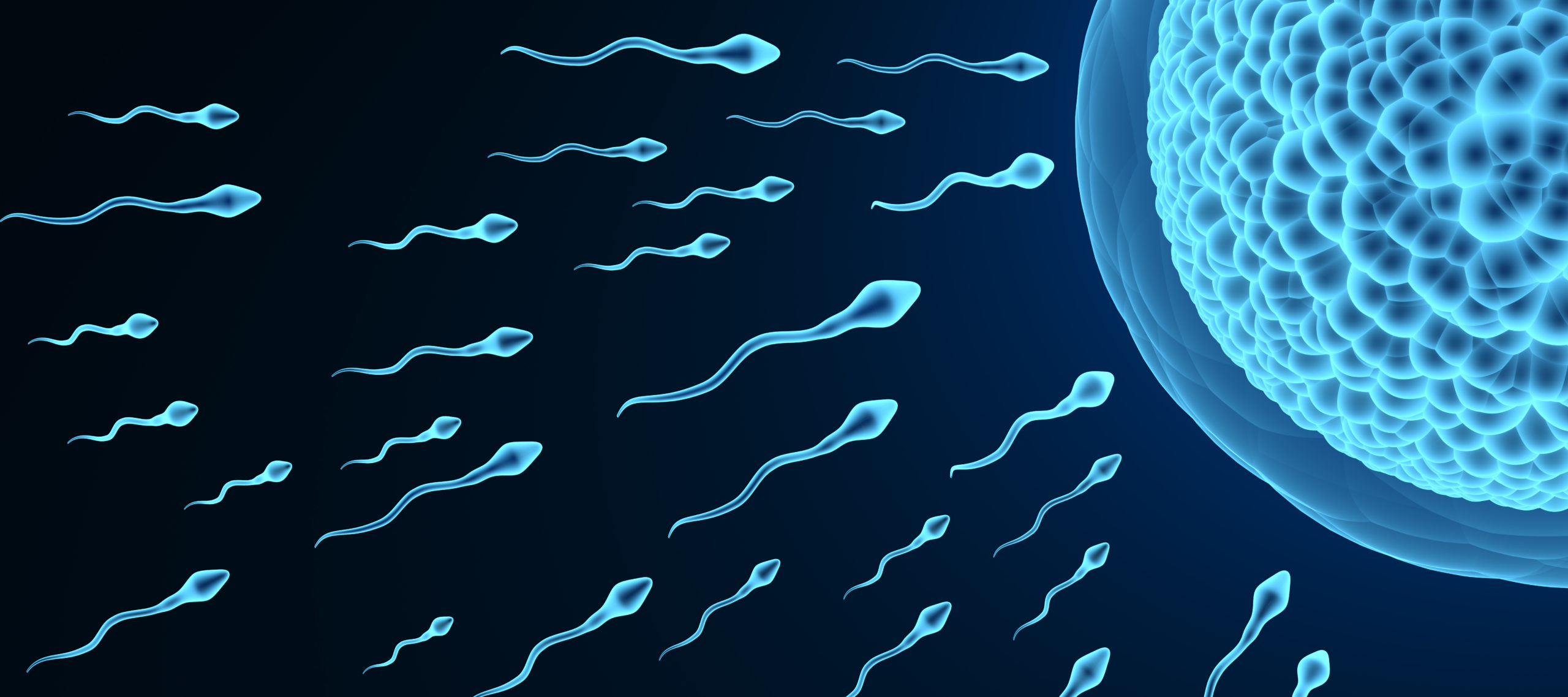At the recent annual conference of the American Society of Animal Science, SMART Reproduction intern Brittany Hirsch presented the following research in the Undergraduate Student Poster Competition.

Effect of different semen extenders on post-thaw sperm characteristics of caprine semen
Authors include:
Brittany Scott owner and CEO of SMART Reproduction
Saulo Menegatti Zoca, PhD Assistant Professor and Extension Beef Cattle Specialist in Reproductive Management, the University of Tennessee Institute of Agriculture.
https://www.asas.org/about/national-awards/past-awardees/award-winner-detail/megegattizoca–young
Jerica JJ Rich, PhD Assistant Professor College of Agriculture, Arkansas State University Jonesboro, Arkansas, United States
Abstract: Cryopreservation of semen has allowed for the global spreading of genetic material across several different species. Semen cryopreservation and artificial insemination allow for even small flocks to incorporate superior genetics from all over the world. This research aimed to determine differences in post-thaw caprine semen characteristics based on the type of extender used during preservation. A variety of both meat and dairy breeds were used for this study, including Boer (n=3), Nigerian Dwarf (n=3), and Saanen (n=2). Bucks were collected by artificial vagina, ejaculates were assessed for quality control using iSperm (Initial) before processing. Samples were divided evenly across treatments per collection date (3 to 4 collections per buck). Each ejaculate was divided into three equal portions for the study (CONTROL: egg yolk-based extender, SOY: soymilk-based extender, and UHT: ultra-high temperature milk-based extender). Post-thaw sperm parameters were evaluated across treatments using iSperm at hours 0 (PT0h) and 2 (PT2h) and were compared to fresh (Initial) characteristics and to the other treatments. Characteristics evaluated included total motility, and proportion of samples above 30% motility at PT0h (minimum motility standard). For motility, there were effects of extender type (P < 0.0001), breed (P < 0.01), time (P < 0.0001), and interactions of breed by time (P=0.04) and time by extender (P < 0.0001). CONTROL had 61.9% motility and was greater (P < 0.0001) than UHT which had 39.4% motility, and both CONTROL and UHT had greater (P≤0.0003) motility than SOY (21.7%). The Saanen buck motility was 49.1% and was not different (P=0.15) from Nigerian 41.5%, and both Saanen and Nigerian had greater (P≤0.01) motility than Boer which was 29.8%. Post-thaw motility at PT0h was 27.0% and at PT2h was 21.7% and both were less than the initial motility of 74.0%, this same pattern was observed within the breed by time interaction where initial motility was greater (P < 0.0001) than both PT0h and PT2h which were not different (P≥0.06). There was no difference in motility for Initial across the different extender types (72.9%, 75.9%, and 72.9% for CONTROL, UHT, and SOY, respectively; P≥0.54). For both PT0h and PT2h, CONTROL (60.9% and 50.3%, respectively) had greater (P < 0.0001) motility than UHT (23.5% and 22.0%, respectively) and SOY (9.5% and 6.9%, respectively). The UHT had greater (P≤0.002) motility than SOY at both PT0h and PT2h. Extender type affected the proportion of samples that reached the minimum motility standard (P < 0.0001) where 96.3% of CONTROL had motility greater than 30% while UHT and SOY had 42.5 and 0%, respectively. Although CONTROL extender resulted in more samples of greater quality, UHT extender is a valid option for caprine semen resulting in acceptable motility and quality post-thaw characteristics. SOY extender needs to be evaluated further before it can be used with caprine semen.
SMART Reproduction is proud to be to provide our talented interns the opportunity for industry furthering research. The passion and drive to improve caprine reproductive systems something we believe and invest in!

